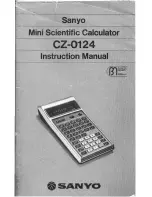
FEC920: USER GUIDE
Page 77
September 18
ROC’ (rate-of-change: rising), ‘Fall ROC’ (rate-of-change: falling), ‘Digital High’, ‘Digital
Low’. See ‘Alarm types’, below, for definitions.
Status
Read only. This shows that the alarm is Off, Active, SafeNotAcked or ActiveNotAcked. For
‘Auto’ and ‘Manual’ alarms only, ‘SafeNotAcked’ means that the alarm trigger source has
returned to a non-alarm state, but the alarm is still active because it has not been
acknowledged. Similarly, ‘ActiveNotAcked’ means that the source is still active and the
alarm has not been acknowledged. Always shows ‘Off’ when the alarm is inhibited (see
below).
Threshold
For absolute alarms only, this is the trip point for the alarm. For absolute high alarms, if
the threshold value is exceeded by the process value (PV) of this channel, then the alarm
becomes active, and remains active until the PV falls below the value (threshold -
hysteresis). For absolute low alarms, if the PV of this channel falls below the threshold
value, then the alarm becomes active and remains active until the PV rises above
(Thr Hysteresis).
Reference
For deviation alarms only, this provides a ‘centre point’ for the deviation band.
For ‘deviation high’ alarms, the alarm becomes active if the process value (PV) rises
above the value (Ref Deviation) and remains active until the PV falls below
(Ref Deviation - Hysteresis).
For ‘deviation low’ alarms, the alarm becomes active if the process value (PV) falls below
the value (Reference - Deviation) and remains active until the PV rises above (Reference
- Dev Hysteresis).
For ‘deviation band’ alarms, the alarm is active whenever the process value (PV) lies
outside the value (Reference ± Deviation) and remains active until the PV returns to within
the band, minus or plus Hysteresis as appropriate.
Deviation
For deviation alarms only, ‘Deviation’ defines the width of the deviation band, each side of
the Reference value, as described immediately above.
Hysteresis
For absolute and deviation alarms, this provides a means of preventing multiple alarm
triggering, if the process value is drifting close to the trigger value.
Amount
For rate-of-change alarms only. The alarm becomes active if the process value rises (Rise
ROC) or falls (Fall ROC) by more than the specified ‘Amount’ within the time period
defined in ‘Change Time’, below. The alarm remains active until the rate of change falls
below the value (Amount/Change Time) in the relevant sense.
Change Time
Settable to 1 second, 1 minute or 1 hour. See ‘Amount’ (above).
Average Time
For rate-of-change alarms only. This allows an averaging period (for the process value) to
be entered to reduce nuisance trips due to signal noise, or if the rate of change is hovering
around the trip value.
Latch
None: The alarm remains active until the monitored value has returned to a non alarm
state, when it becomes inactive.
Auto: The alarm remains active until the monitored value has returned to a non alarm state
and the alarm has been acknowledged. Acknowledgement can take place either before or
after the value has returned a non alarm state.
Manual: The alarm remains active until the monitored value has returned to a non alarm
state and the alarm has been acknowledged. Acknowledgement is permitted only after the
value has returned a non alarm state.
Trigger: Not enunciated, this mode is used only to initiate an action defined by user wiring
either using iTools or using the user interface.
Block
Alarms with ‘Block’ set to ‘On’ are inhibited until the monitored value has entered the 'safe'
condition after a start-up. This prevents such alarms from becoming active whilst the
process is brought into control. If a latching alarm is not acknowledged then the alarm is
re-asserted (not blocked), unless the alarm’s threshold or reference value is changed, in
which case the alarm is blocked again.
Dwell
Initiates a delay between the trigger source becoming active, and the alarm becoming
active. If the trigger source returns to a non alarm state before the dwell time has elapsed,
then the alarm is not triggered and the dwell timer is reset.
Acknowledge
Select ‘yes’ to acknowledge the alarm. Display returns to ‘No’.
A5E45696052A Rev-AA
Содержание SITRANS FEC920
Страница 1: ...Flow Energy Calculator FEC920 User Guide A5E45696052A Rev AA September 2018 ...
Страница 247: ......
















































